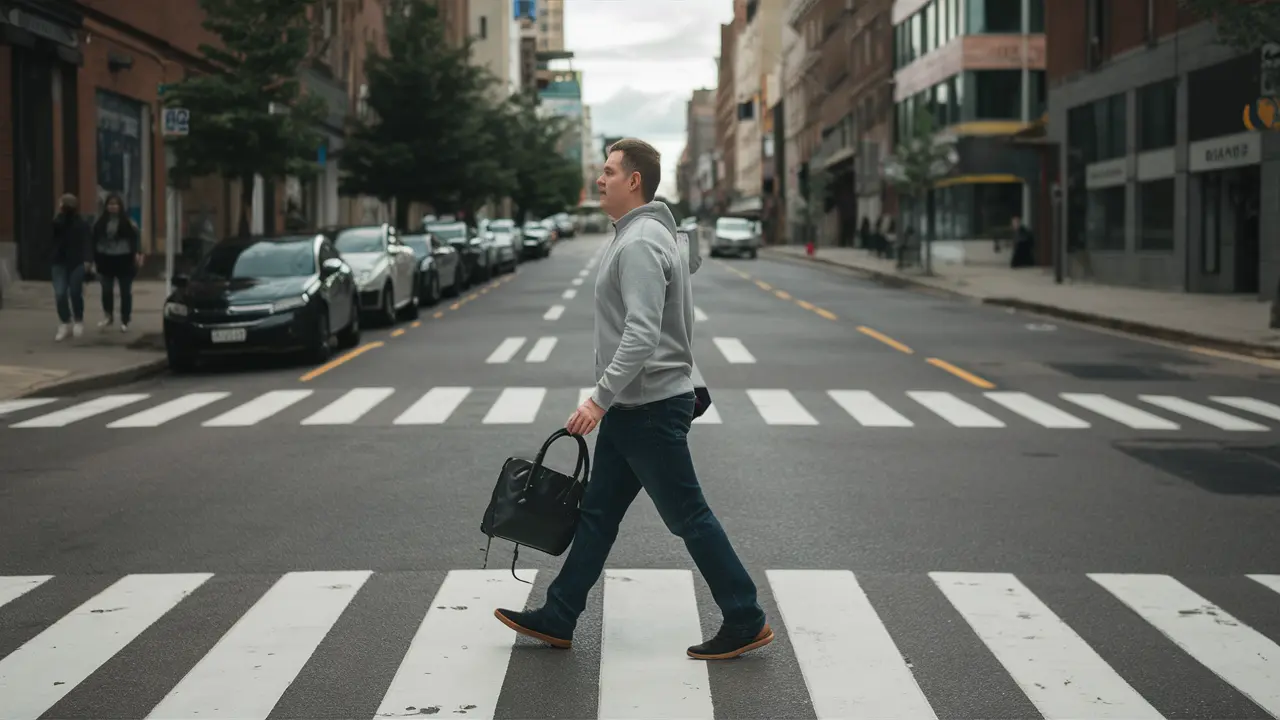Crosswalks are meant to be safe havens for pedestrians, a designated spot where they can cross streets with the expectation of safety. However, despite their intended purpose, crosswalks remain a common site for pedestrian accidents.
These incidents not only cause immediate harm but also instill a lasting fear that can deter people from walking, a healthy and environmentally friendly mode of transportation.
This blog post delves into the causes of pedestrian accidents at crosswalks and outlines effective strategies for prevention, aiming to create safer communities for all.
The Significance of Crosswalk Safety
Crosswalk safety is a critical issue that affects everyone in the community. Pedestrians, including children, the elderly, and people with disabilities, are particularly vulnerable because they lack the protective barriers that vehicles provide. Ensuring the safety of these crosswalks is not just about preventing accidents; it’s about promoting a culture of respect and care on the roads.
Understanding the Causes of Pedestrian Accidents
Several factors contribute to pedestrian accidents at crosswalks:
- Driver Distraction: With the rise of smartphones, distracted driving has become a leading cause of all types of road accidents, including those involving pedestrians.
- Poor Visibility: Accidents are more likely to occur during nighttime or in conditions of poor visibility when drivers may not see pedestrians until it’s too late.
- Failure to Yield: Some drivers do not respect the right of way of pedestrians at crosswalks, either out of ignorance or impatience.
- Speeding: Higher vehicle speeds reduce the driver’s ability to stop in time upon spotting a pedestrian.
Strategies for Preventing Pedestrian Accidents
- Enhanced Crosswalk Visibility: Installing better lighting and high-visibility crosswalk signs can significantly reduce accidents. Flashing lights activated by pedestrians are especially effective in alerting drivers.
- Pedestrian Education: Teaching pedestrians, especially children, about the importance of making eye contact with drivers before crossing and using crosswalks correctly can enhance safety.
- Driver Awareness Campaigns: Public campaigns that emphasize the importance of yielding to pedestrians and the severe consequences of distracted driving can change driver behavior.
- Traffic Calming Measures: Implementing speed bumps, raised crosswalks, and narrowing roads can slow down traffic near crosswalks, giving drivers more time to react.
- Enforcement of Traffic Laws: Strict enforcement of traffic laws related to pedestrian right of way, speeding, and distracted driving is crucial. Penalties should be significant enough to deter unsafe behaviors.
- Adoption of Smart Technology: Smart crosswalks equipped with sensors and artificial intelligence can detect pedestrians and alert drivers through flashing lights or electronic signs. Some systems can even predict pedestrian movements, enhancing their effectiveness in preventing accidents.
The Role of Urban Planning
Urban planning plays a pivotal role in ensuring pedestrian safety. Designing cities with pedestrian safety in mind — through the creation of pedestrian-only zones, wider sidewalks, and more crosswalks — can encourage walking and reduce vehicle-pedestrian conflicts. Planners should also consider the placement of crosswalks away from high-speed roads or provide adequate safety measures where such placement is unavoidable.
Legal Support for Pedestrian Accident Victims in Salt Lake City
Prevention is key to pedestrian safety at crosswalks, but accidents still happen. In Salt Lake City, victims can seek help from truck accident lawyers who are experts in handling cases involving pedestrians and large vehicles. These lawyers help navigate personal injury law and secure fair compensation for injuries and damages.
Working with them allows victims to focus on recovery while their rights are protected. This partnership emphasizes holding negligent parties accountable, promoting road safety and respect.
Community Involvement in Pedestrian Safety
Community involvement is key to enhancing pedestrian safety at crosswalks. Local communities can advocate for better crosswalk safety measures and participate in awareness campaigns. Schools can engage students in safety education programs, while businesses can support initiatives that promote pedestrian safety in their areas.
Conclusion
Preventing pedestrian accidents at crosswalks requires a multifaceted approach that involves enhanced visibility, education, stricter law enforcement, smart technology, thoughtful urban planning, and active community participation. By adopting these strategies, we can work towards creating safer environments for pedestrians, which in turn encourages walking as a viable and enjoyable mode of transportation.
As we move forward, let us remember that every pedestrian accident prevented is a life saved or an injury avoided. It is our collective responsibility to ensure that crosswalks fulfill their role as safe passages for pedestrians. Together, we can make our streets safer for everyone, one step at a time.



